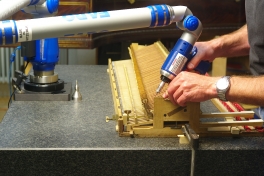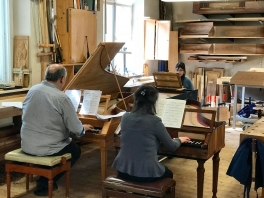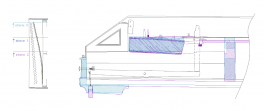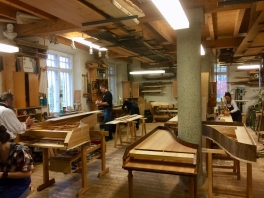Methods
Our research is oriented at the present standards following ICOM and CIMCIM [1].
____________________________________
[1] Comité international pour les musées et collections d’instruments et de musique (International Committee for Museums and Collections of Instruments and Music; Comité internacional para museos y colecciones de instrumentos y de música)

I
Documentation
At a first stage dimensions of an instrument and its individual parts are surveyed and recorded, including all traces of manufacturing, repair and restoration processes, aging and damage.
The focus is on a complete documentation of the instrument "as is at present" as a record of the historical state of the instrument as such as well as a fundament for future data interpretation.
(See an example here).
II
Plans
This forms a basis for the drawing of plans which enable hypotheses about any original or concept state of an instrument based on the documented traces of manufacturing or changes. Only then any reconstructions of eventual concepts can be based on a solid data fundament. These also can be realised on a virtual basis without any modifications or alterations of the original instrument.
III
Reverse Engineering/Experimental Archaeology
These plans and the recorded work traces allow the production of a replica within a separate reverse-engineering process.
By comparison of recorded work and tool traces with those left during the replica productioning re-working the traditional handicraft process permits insights in the original planning and production stages of the original instrument, without any affecting, deteriorating or destroying the traces recorded in the original instrument.
(See here some recent examples;
The result is a fac-simile replica based on scientific data with permanent control of its manufacture that can for itself form a basis of future research.

IV
Potential
A fac-simile replica permits investigation of playing and sound characteristics etc. in theory and practice, without any tampering with the historical original instrument, thus allowing the preservation of an original as a memorial and historical source for future generations, and offering a research and interpretation fundament unaffected by the wear and tear of the original as well as serving as a prototype and reference for further fac-simile replicas, in this way forming a reference for enduring aging processes.
© Greifenberger Institut für Musikinstrumentenkunde | info@greifenberger-institut.de





